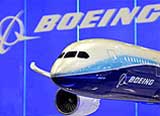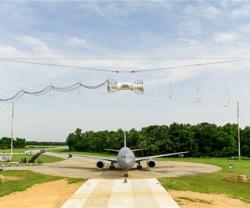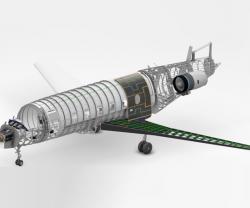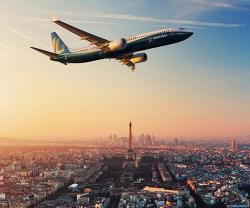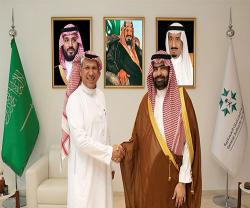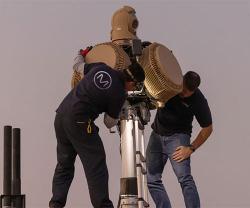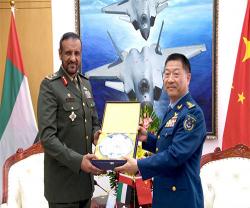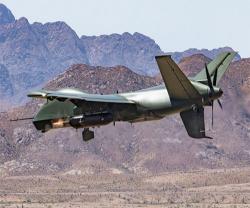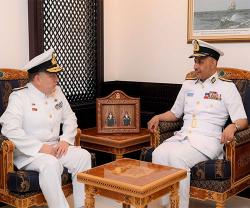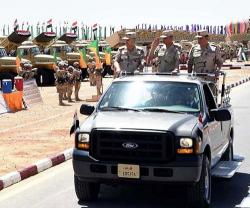Boeing: Mideast Needs 2,340 Airplanes by 2029
14.05.2011 Aviation & Space
Boeing forecasts airlines in the Middle East will require an estimated 2,340 airplanes worth $390 billion by 2029, with demand being driven by the rapid growth of air travel in the region.
Boeing also estimated that Middle Eastern air travel will grow by an average of 7.1% per year over the next 20 years, outpacing the region’s projected economic growth rate of 4% over the same period.
“Middle East airlines have consistently led the rest of the world in traffic growth over the past 2 years and there is every indication that this trend will continue into the foreseeable future,” said Boeing Commercial Airplanes Vice President of Marketing Randy Tinseth.
According to the Boeing forecast, twin-aisle aircraft will account for 50% of the region’s new airplane deliveries over the 20-year period – as compared to 25% globally.
Specifically, 43% of the airplanes expected to be delivered to airlines in the region over the next 20 years will be twin-aisle jets such as the Boeing 777 and 787.
Large airplanes such as the Boeing 747 will account for 7% of forecasted demand. Single-aisle jets such as the Boeing 737 will account for 47% of the deliveries. Regional jets will account for the remaining 3%.
“While we expect the global fleet size to double by 2029, Middle Eastern airlines are projected to expand their fleets by more than 150% during the same period. This is a sure indicator that airlines in the region are planning for growth, while also modernizing their fleets to improve operating efficiencies,” Tinseth said.
“Their well-coordinated growth and investment plans are already delivering results and Gulf airlines currently have an estimated wide-body order backlog of almost 140,000 seats, which is significantly higher than most other regions in the world.”
According to Boeing’s Current Market Outlook, airlines around the world will need 30,900 new airplanes through 2029, valued at $3.6 trillion. 44% of these aircraft will replace older, less-efficient airplanes, while 56% will account for new aircraft needed to meet air traffic growth.
The world fleet is projected to double from 18,890 to 36,300 airplanes total airplanes during this span.
To meet the growing demand for new airplanes, Boeing recently announced an increase in production for its popular 777 and 737 airplane families. The company is also focused on delivering on new development programs including the 787 Dreamliner and 747-8 Freighter and Intercontinental this year.
As of the April 2011, Boeing had a backlog of 3,445 airplanes, 345 of which have been ordered by customers in the Middle East.
However, customers in the region count for a large share of Boeing’s twin-aisle backlog, accounting for 31% of 777s and 15% of 787s on order. Boeing currently has a total of 47 customers in the region that operate an estimated 1,200 flights per day on 423 airplanes.
Significantly, the growth in the region’s airline fleets is also expected to increase demand for trained pilots with a projected requirement for 32,700 personnel over the next 20 years. Boeing also forecasts demand for 44,500 technicians in the region during this time.
Boeing also forecasted a significant growth in air cargo in the region. Overall air cargo between the Middle East and Europe alone is expected to grow at an average annual rate of 6% from 2009 to 2029.
Boeing also estimated that Middle Eastern air travel will grow by an average of 7.1% per year over the next 20 years, outpacing the region’s projected economic growth rate of 4% over the same period.
“Middle East airlines have consistently led the rest of the world in traffic growth over the past 2 years and there is every indication that this trend will continue into the foreseeable future,” said Boeing Commercial Airplanes Vice President of Marketing Randy Tinseth.
According to the Boeing forecast, twin-aisle aircraft will account for 50% of the region’s new airplane deliveries over the 20-year period – as compared to 25% globally.
Specifically, 43% of the airplanes expected to be delivered to airlines in the region over the next 20 years will be twin-aisle jets such as the Boeing 777 and 787.
Large airplanes such as the Boeing 747 will account for 7% of forecasted demand. Single-aisle jets such as the Boeing 737 will account for 47% of the deliveries. Regional jets will account for the remaining 3%.
“While we expect the global fleet size to double by 2029, Middle Eastern airlines are projected to expand their fleets by more than 150% during the same period. This is a sure indicator that airlines in the region are planning for growth, while also modernizing their fleets to improve operating efficiencies,” Tinseth said.
“Their well-coordinated growth and investment plans are already delivering results and Gulf airlines currently have an estimated wide-body order backlog of almost 140,000 seats, which is significantly higher than most other regions in the world.”
According to Boeing’s Current Market Outlook, airlines around the world will need 30,900 new airplanes through 2029, valued at $3.6 trillion. 44% of these aircraft will replace older, less-efficient airplanes, while 56% will account for new aircraft needed to meet air traffic growth.
The world fleet is projected to double from 18,890 to 36,300 airplanes total airplanes during this span.
To meet the growing demand for new airplanes, Boeing recently announced an increase in production for its popular 777 and 737 airplane families. The company is also focused on delivering on new development programs including the 787 Dreamliner and 747-8 Freighter and Intercontinental this year.
As of the April 2011, Boeing had a backlog of 3,445 airplanes, 345 of which have been ordered by customers in the Middle East.
However, customers in the region count for a large share of Boeing’s twin-aisle backlog, accounting for 31% of 777s and 15% of 787s on order. Boeing currently has a total of 47 customers in the region that operate an estimated 1,200 flights per day on 423 airplanes.
Significantly, the growth in the region’s airline fleets is also expected to increase demand for trained pilots with a projected requirement for 32,700 personnel over the next 20 years. Boeing also forecasts demand for 44,500 technicians in the region during this time.
Boeing also forecasted a significant growth in air cargo in the region. Overall air cargo between the Middle East and Europe alone is expected to grow at an average annual rate of 6% from 2009 to 2029.
Previous PostLM F-35: Program Flight Test Update
Latest news
Latest events
ISNR Abu Dhabi 2024
21 - 23 May 2024ADNEC Centre Abu Dhabi - United Arab EmiratesEUROSATORY 2024
17 - 21 Jun 2024Paris Nord Villepinte - FranceFarnborough International Airshow
22 - 24 Jul 2024Farnborough - United KingdomMiddle East Special Operations Commanders Conference (MESOC)
02 Sep 2024Aqaba - Jordan

